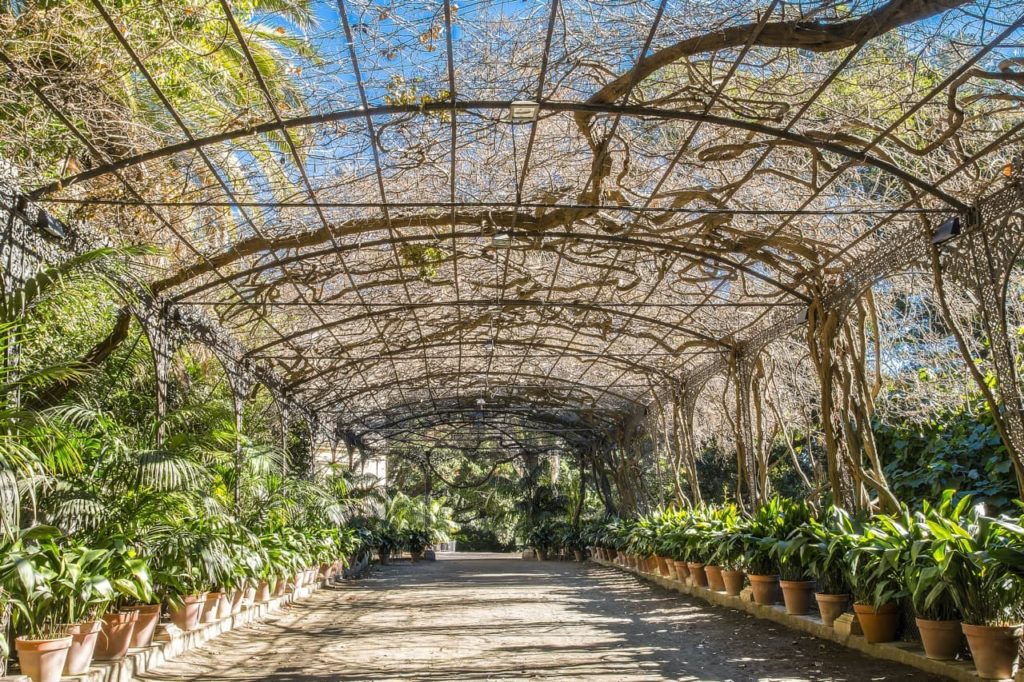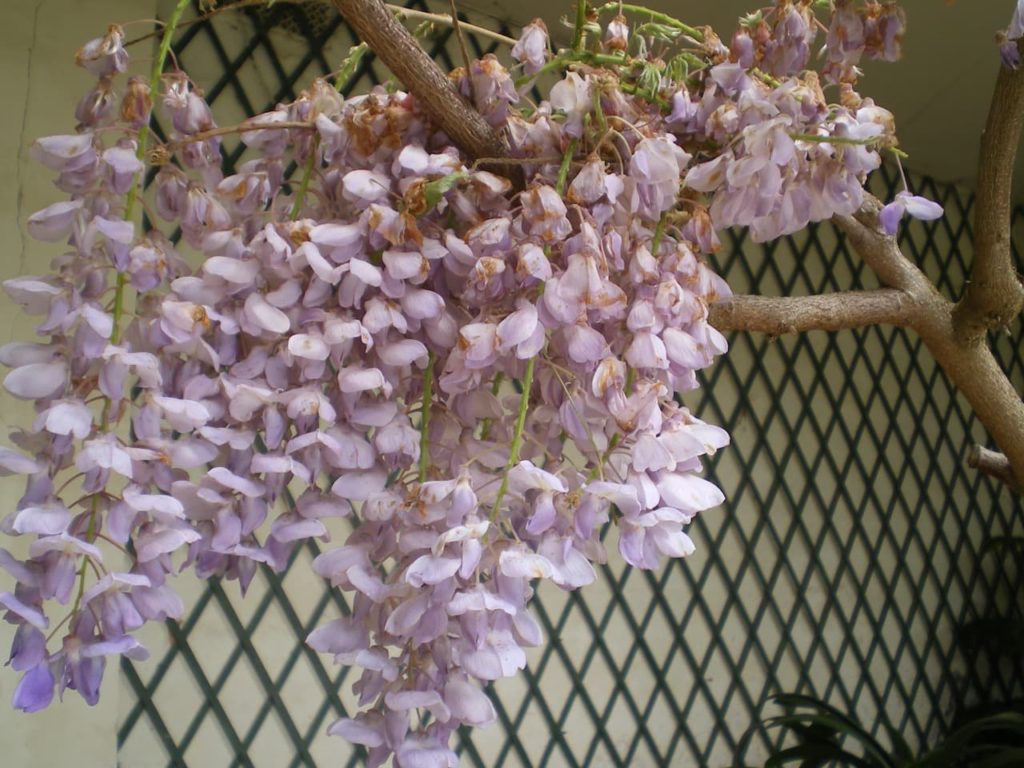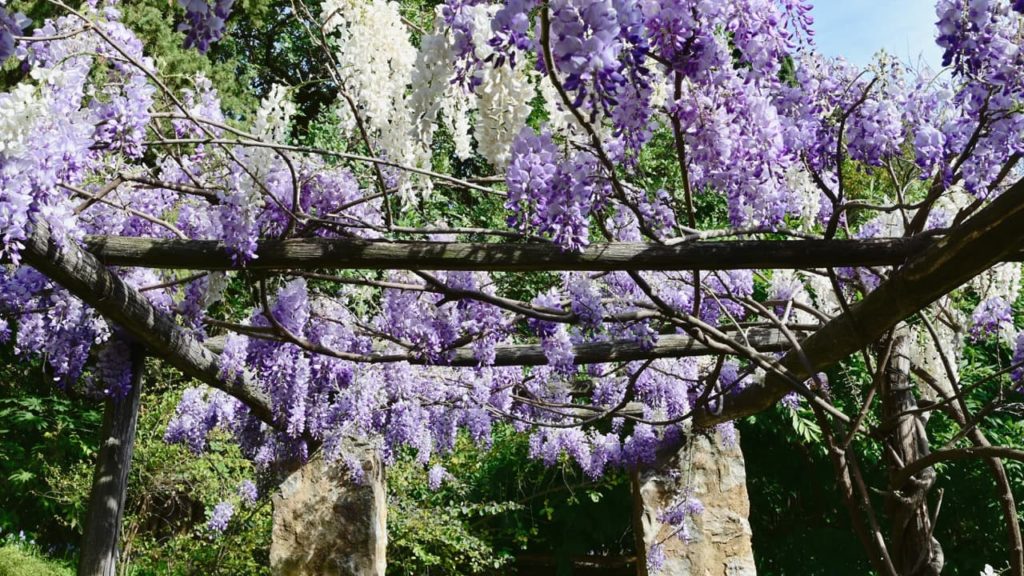How To Train Wisteria Twice A Year: The Objective Is To Control Its Climbing

CLIMBERS > WISTERIA > TRAINING
Reviewed By PETER LICKORISH

Peter is a Horticulture Lecturer and self-employed Horticulturist, with a passion for diverse areas of the industry - from garden design to the science behind plant growth and propagation. He has completed the Royal Horticultural Society’s Master of Horticulture (MHort) Award and lectures on RHS courses at Bedford College.
Contributions From CHRIS O'KEEFE

Chris has been running The London Wisteria Company for the past 15 years and is also the Owner of O’Keefe Gardens Limited, a garden design company. He finds that these two businesses work well together as January to March are normally a little quieter in the garden calendar, which is the perfect time to concentrate on wisteria winter pruning and wire support.
IN THIS GUIDE
WISTERIA GUIDES
Not Flowering
Pruning
Training
Wisteria is often called Wisteria Vine because it is a vigorous grower and can climb rapidly.
It ascends vertical structures by twining and spiralling around them with its strong stems.
Where Wisteria is concerned, it is not so much a question of training it to climb because it climbs all too well by itself.
Instead, the objective is to control its climbing by training it.
Wisterias are usually divided into four classes; Japanese, Chinese, American and Downy or Silky.
No matter which type you have, the essentials of training remain the same, as do the essentials of its lush beauty over the spring-summer season.
| Difficulty | Easy |
| Equipment Required | Fasteners; arbour, pergola or archway (optional) |
| When To Train | June to July and February to March |
Support Structures For Wisteria
Although a Wisteria vine has to be trained, what exactly you are training it on is another important consideration.
“We always recommend using good support, as with any wisteria, they start off small, but over time will grow quickly and gain weight with their twisted trunks,” says Chris O’Keefe, the owner of The London Wisteria Company.
The usual and customary garden trellis might not be the best choice, as if it is too lightweight, sooner or later both Wisteria and trellis will come down.
“Wisteria also needs space to hang, and a trellis lends itself to denser growing climbers, like Clematis,” shares Master Horticulturist Peter Lickorish.
Some ideal support structures for a Wisteria include an open framework for an arbour, a big pergola or an archway.

A boundary wall or a pillar would work out, but it would be helpful if smooth, unbroken surfaces were first prepped to give the vine something to climb on.
I recommend growing a Wisteria, especially a Japanese or Chinese type, against the wall of your dwelling.
In any and all cases, the support structure must be very sturdy and properly anchored into the ground.
These considerations are all the more important if you live in a windblown area.
Structural Considerations
To prep a smooth, unbroken surface, string horizontal lengths of wire, spaced apart vertically by about 30cm.
“Depending on the surface, vine eyes can be screwed in at metre intervals and used to tension the wire,” shares Peter.
Although you can use any wire for these robust vines, it is best to use smooth, PVC-coated or vinyl-coated wire.
Installing wide, large-holed netting in front of a boundary wall will offer a convenient face for the vine to climb around.
Another option is to mount plastic mesh fencing on the structure, particularly if it is a thick, broad pillar.

A pole or a narrow pillar will not need any prepping; Wisteria will twine around these, but it is best if the pole is connected to something else, such as an arch, giving room for the flowers to hang.
Netting or fencing only serves to get Wisteria started on its way.
They are not meant to be permanent supports and sooner or later they may degrade and break up.
By then, the Wisteria should not need them anymore.

The reason is that the climber’s lower stems will have thickened and become woody, so the plant will have its own load-bearing support to a partial extent.
Also, the upper branches will have ascended to the top of the real structure and, in going over it, will also provide support, as the climber will partially hang over and off the structure.
Of course, if the support structure itself is trellis-like or has horizontal or vertical bars, then a Wisteria will have no trouble from the get-go as it will twine and coil around its elements.
When & Where To Train Wisteria
In general, a Wisteria should be transplanted 15-25cm from the support structure.
The exact distance depends on the type of Wisteria and its ultimate size.
After transplanting a Wisteria, do not prune it for at least a year; training too should be kept at a minimum during this time.
Train Wisteria twice a year.
The first phase would be as fresh growth emerges in spring, around February to April, and the second phase would be in the June-July timeframe, right after summer pruning.

In the first phase, you will mainly be training young shoots and pruning to trim side-shoots into flowering spurs.
In the second phase, you will mainly be pruning and training growing stems.
“I like to treat wisteria almost like an espaliered fruit tree,” shares Peter.
“I find this gives a really neat finish and allows some transparency if the brickwork or fence behind a wisteria is attractive too.
“I space horizontal wires on either side of the main ‘trunk’ at 30cm intervals up the surface, such as a wall, fence or the sides of a pergola.
“Select a single stem to branch at each level of wire, on either side, and shoots along the length of this stem can be pruned to 7 buds in July and 2 buds in February.”
Choosing Fasteners To Use
To train a Wisteria, fasteners are only required when the support structure has to be fronted with netting, as described above.
If it consists of a lattice-like structure, bars or uprights, fasteners are not necessary, though they can still be useful.
The best types of fasteners are high-quality commercial garden tie wire, garden twist ties or narrow fabric strips.
“If you wish to grow your wisteria against a wall, I highly suggest using wire support,” Chris suggests.

“This is a simple system which uses vine eyes which are drilled and then screwed into the wall or house brick.
“We then secure rope wire which threads through the vine eyes before being tightened by a turnbuckle.
“This system is quick and can take a lot of weight if the wisteria is trained correctly.”
That said, Wisterias, notwithstanding their lovely and graceful form, are seriously strong plants.
They do not need pampering and you can get away with using ordinary twist ties, provided that they are long and strong enough, and other types of ties, such as packing tape.
Training Wisteria Around Its Support
If a green shoot is anywhere close to the support structure that you want to train it into, simply grasp it between your fingers and twist it around the vertical a couple of times, then grasp it with part of the support structure.
After, gently press it in place for a minute or so, being careful not to squeeze the growing tip.
This is how I have sent shoots of twining climbers up pillars and posts and they have automatically further twined and coiled, growing and thickening over time.
Chinese Wisterias twine counterclockwise and Japanese Wisterias clockwise, but if you ever need a clue, simply glance at the direction mature stems on the plant are twined and twirl the under-training shoot in the same direction.

This method will not work for shoots that are very long and growing off to one side or that seem to have a mind of their own.
For these, you will have to use fasteners.
However, even shoots that are not exactly convenient can be trained without fasteners if the support structure has a lattice-like face.
Thread these shoots through three or four holes while twining them around the rods and bars.
Otherwise, simply position the shoot in the direction where you wish to train it and stick it to a structural element by twisting a tie around stem and element, or by attaching a loop of tape around it.
Whatever fastener you use, it should be firmly fastened but should not cut into the shoot or press it against the element; leave a bit of space for the stem, as it will fill out.

Unless you have other plans, your goal should be to coat the support structure in an even layer of twining stems for a pleasing appearance.
So, in order to achieve that goal, if you see two or three healthy stems starting to twine too close, gently untwine one shoot, preferably the newer, looser one, and fasten it to a nearby bare part of the structure.
As for overriding Wisteria decision-making, if, one fine morning, you spot a very fresh shoot twirling itself around a garden chair that is close by your pergola, you know what to do.
Do keep in mind that training Wisteria goes hand-in-hand with pruning it, so for further particulars, please see our pruning guide.

